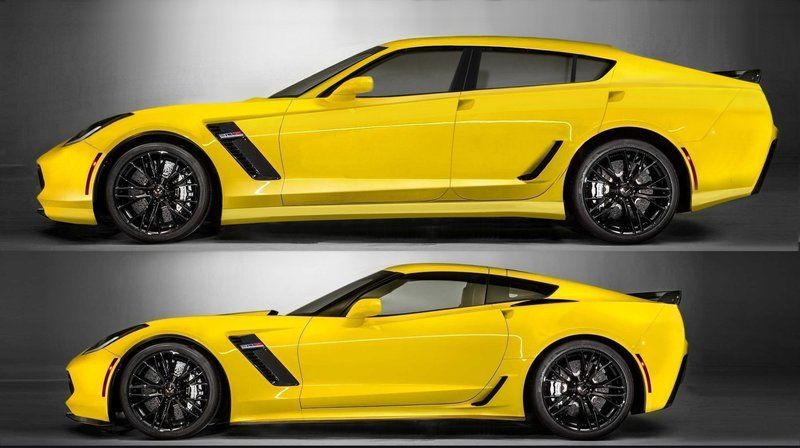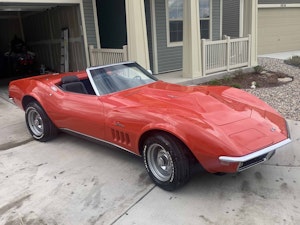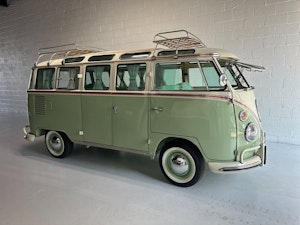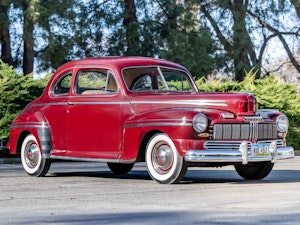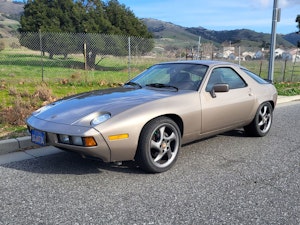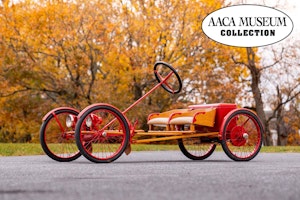Media | Articles
Bunkie Knudsen was right: A Corvette sedan is unholy
The rumors of a mid-engine Chevy Corvette are now common. Confirmation, however, remains elusive. Some purists may already be in shock by the prospect of a Corvette with its engine in the “wrong” place, and now the web delivers another fiberglass bombshell: The specter of a new four-door Corvette.
What began as a thread on CorvetteForum.com about the Callaway C7 AeroWagen, a package that can be purchased to increase the storage space beneath the seventh-generation Corvette’s hatch, escalated to include the possibility of a four-door ‘Vette. Before you send hate mail to General Motors, Chevrolet, or Hagerty, calm down. The four-door Z06 is only a forum member’s Photoshop attempt at humor (or horror).
But that rendering of a fictional yellow car prompted us to dig through some Corvette history and to discover that at least one four-door Corvette actually was built, and at least two four-seaters were considered. The first attempt at a four passenger ‘Vette was developed in 1956 and called the Corvette Impala. It didn’t see production as a Corvette but proved to be the 1958 Impala’s inspiration.
Another four-seat concept followed in 1961 and looked like a stretched 1963 Split-Window, codenamed XP-796. It was created at the behest of Ed Cole, GM car and truck chief and, later, GM president, likely as a possible Ford Thunderbird competitor, as he was tired of seeing the Corvette beaten in sales. The T-Bird had gained two seats in 1958.
Chevrolet also purchased a Ferrari 2+2 for the Styling department to study the potential for a four-seat Corvette. Ultimately, the XP-796 project was undermined by Bunkie Knudsen, Chevy Division general manager Bunkie Knudsen. According to Corvette Fever magazine (Dec. ’07), Knudsen frequently criticized the notion of a two-plus-two Corvette: “ ‘It’s the wrong thing to do,’ he told GM Vice President Bud Goodman, feeling sure it would be turned down. Three days later, on Thursday, October 18 [1962], Knudsen tersely described the meeting in which the four-passenger Corvette was thrown out.” But it wasn’t.
Marketplace
Buy and sell classics with confidence
Early in 1963, according to Corvette Fever, Knudsen expanded in his diary: “ ‘For some time now Mr. Cole has persistently asked me for a four-pass Corvette. Our Sales Dept-our advertising department and myself feel that a four-passenger Corvette will only ruin the Corvette image and not sell any great quantity. I have also asked our largest Corvette dealers, and they do not want a four-passenger Corvette. On arriving in town last weekend, I found in Styling Modeling a four-passenger Corvette. I understand this was Mr. Cole’s instructions.’ ” The four-place Corvette probably died, finally, shortly thereafter. Although Corvette historian Jerry Burton says that designer Larry Shinoda told him that the four-seater was actually killed because a GM vice-president got stuck in the back seat. Apparently, a seat release jammed, trapping the exec.
Still, through the late 1970s. Chevrolet explored production of a four-seat, four-door Corvette. According to Super Chevy (March ‘01), the project was outsourced to California Custom Coach, which built the prototype. After five personalized production vehicles were built, however, the project was scrapped due to the exorbitant cost: While a standard, new 1979 Corvette cost roughly $13,000, these four-doors stickered at about $35,000.
One detail that did survive the Corvette America, as it was named, was the glass hatchback. It went into production on 1982 Collector Edition Corvettes and returned on all non-convertible models when the C4 launched.
Finally, Chevy was also rumored to have been playing with a sixth-gen four-seat Corvette to compete with Porsche’s Panamera (which this C7 resembles), but no evidence surfaced.
Bunkie Knudsen was right. A four-seat model would have hurt the Corvette’s image back then, and it would now. Witness the extinct Ford Thunderbird.
Now, where is that mid-engined monster Corvette?
